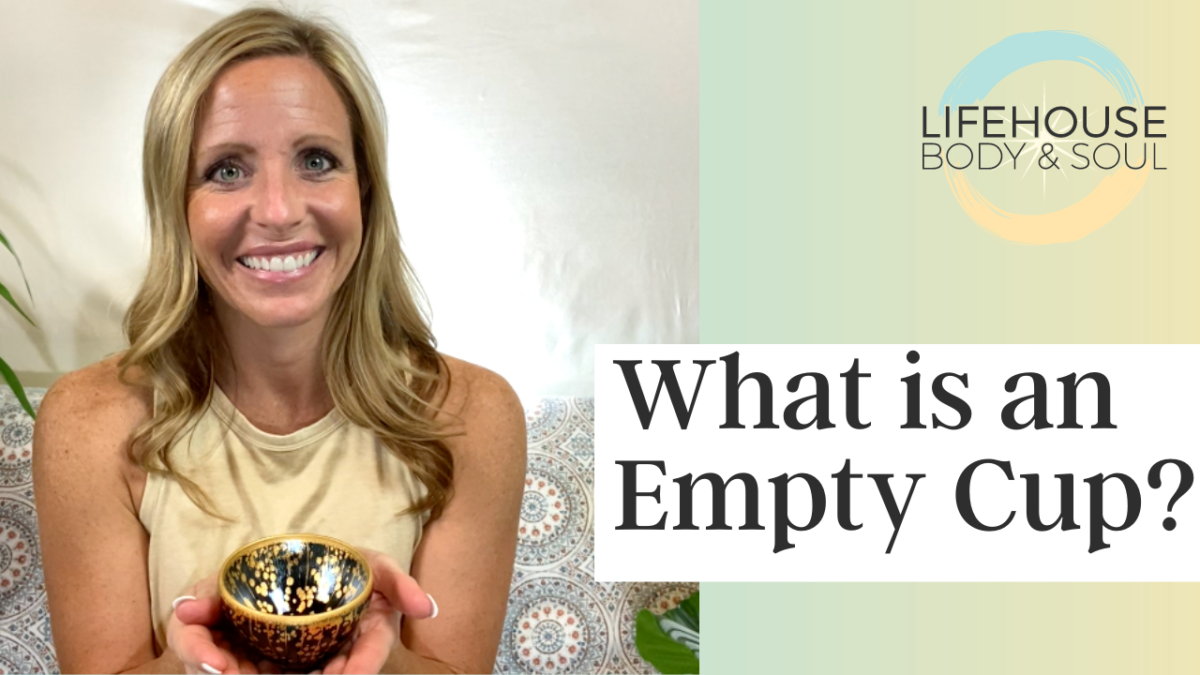At Lifehouse Body & Soul, we often talk about emptying our cup. This is a reference to the Zen parable of the Empty Cup, which symbolizes our fundamental requirement for deep learning and growth.
As the story goes, an enthusiastic young student comes to study under a great master. The master invites him to sit, and he begins to pour him some tea. The student’s cup fills to overflowing, and still, the master continues to pour, tea now spilling over across the table and into the student’s lap. “Stop! The cup is full! It’s full!” shouts the student in confusion and shock. “Ah, yes, your cup is full, my young friend. So there is no room for me to pour the tea. Likewise, there is no room in your head or heart for new ideas. There is no room for me to teach you anything.”
We can empty our cup in many ways: physically, mentally, emotionally, spiritually. Today, let’s explore ways we can use our physical body to empty our cup.
First, we can use our breath to empty our cup. Ujjayi breath is used in yoga practice, and it means “victorious over our thoughts.” Ujjayi breath is inhaled deeply through the nose and then exhaled back out of the nose with a slight constriction in the back of the throat. This technique produces a “Darth Vader”-type sound and helps to activate the body’s Relaxation Response. Such breath should be loud enough and big enough to feel all-engrossing, helping us to redirect our attention from thoughts and emotions, and into the present moment through the body.
Second, we can use exercise to empty our cup. Strong cardio movements paired with intentional exhales can provide a significant release in mind, body, and spirit. In our Daily Practice at Lifehouse Body & Soul, the first half of class is packed with intense cardio, exaggerated arm movements, and plenty of jumps and kicks. Sometimes we are encouraged to “throw a temper tantrum,” providing a safe and appropriate way to express difficult and powerful emotions like rage, anger, or frustration. All of this physical release serves us to help empty our cup.
Third, we can use our bodies to help us find an empty cup in the present moment. To do this, we must become more aware of how cluttered our minds and hearts are. Is there room in our head for a Higher Power’s enlightenment? Or are we so filled with our own stories, opinions, and fears that there is no room to pour the tea? We can start to notice when we are stuck in our heads reliving the past, or spinning our wheels worrying about the future.
When we use our bodies to anchor us into the present moment, we can find freedom and rest from depression, anxiety, and incessant feelings of overwhelm. We can learn to direct our awareness towards our breath and bodily sensations, and out of our busy minds.
Our bodies can become our most powerful spiritual tool. They point us toward a pathway to peace. They remove us from the noise and chaos. They help us cut through the confusion and ground us into what actually is–right here and now.
This week, let’s practice noticing when our cup is full–when we feel cluttered, confused, or overwhelmed. Let’s notice when we come charging in with a strong opinion, with expectations, or stuck in past or future.
Let’s practice using our simple breath to empty our cup and find our spiritual center, the place of peace that always resides inside us when we feel for the present moment.
